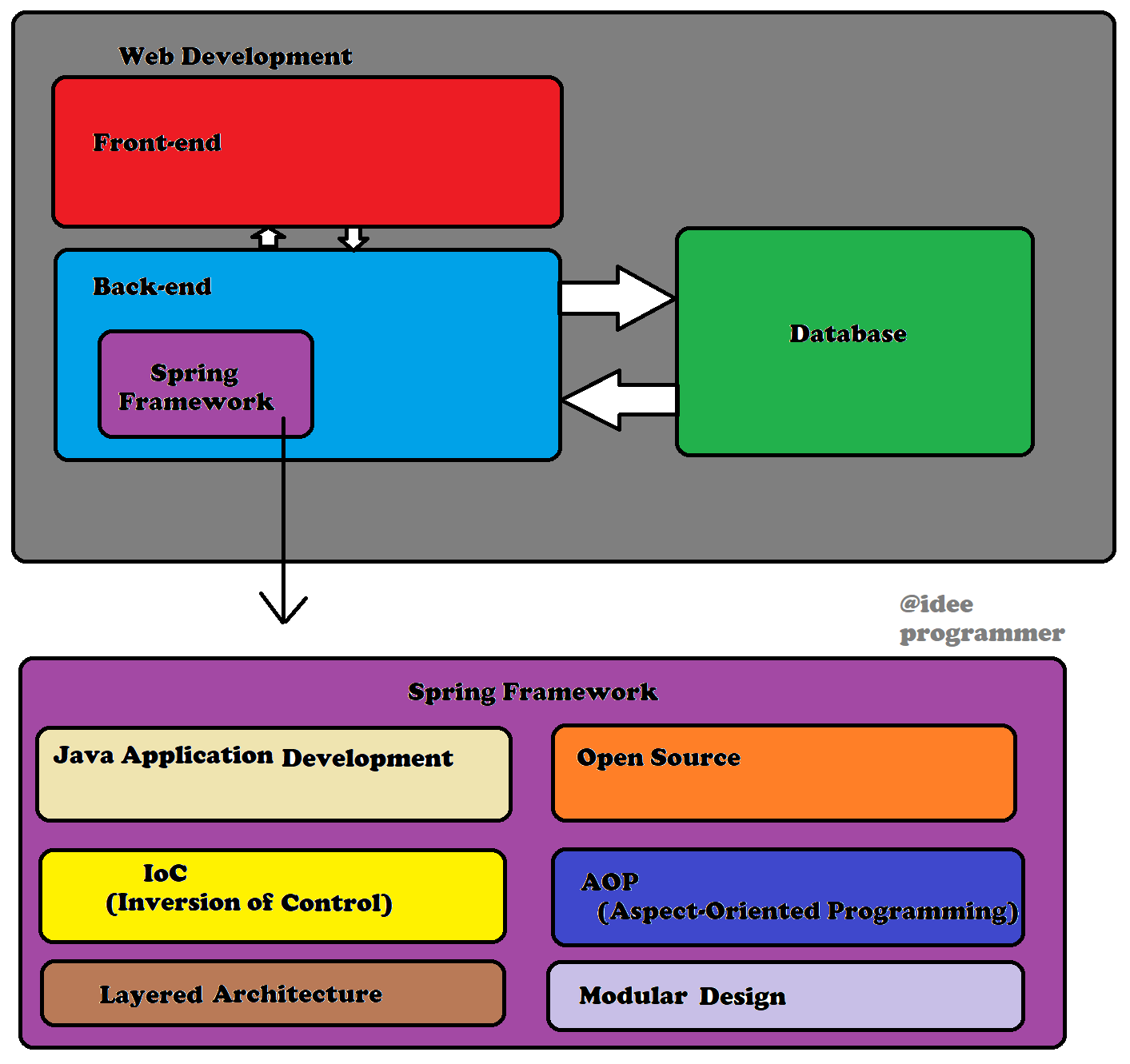
Play Store Application link – Spring Framework in 9 steps – Apps on Google Play
Definition –
spring is a
-open source,
-java application development framework.
-It has layered architecture; we can use what we need and leave what we don’t need.
-2 core principles of spring framework- IOC and AOP.
Detailed explanation of each line with real development scenario example-
1- Open source –
Let’s say a developer is working on a project that requires a framework for building web applications. They decide to use Spring Framework because it is open-source and widely used in the Java community.
As they start using Spring, they encounter a bug in the framework that prevents their application from working as intended. Instead of giving up or switching to a different framework, they decide to fix the bug themselves. They start by downloading the source code of Spring from its GitHub repository.
The developer then identifies the source of the bug and writes a fix for it. They test the fix locally to ensure it works as intended. Once they are satisfied with the fix, they create a pull request on the Spring GitHub repository, submitting their fix for review by the Spring community.
Other developers who are also using Spring Framework review the pull request and provide feedback on the code. They may suggest improvements or identify issues that the original developer may have missed. The developer can then make changes to the code based on the feedback.
Once the pull request is approved, the fix is merged into the main Spring codebase. This means that the developer’s fix will be included in future releases of Spring Framework, benefitting not only their own project but also anyone else who uses Spring.
By contributing to Spring Framework, the developer has helped improve the framework for themselves and the wider community. They have also gained experience in contributing to open source software and collaborating with other developers.
2-java application development framework
Let’s say a developer wants to build a web application using Java. They could start from scratch and write all the code themselves, but this would be time-consuming and error prone. Alternatively, they could use Spring Framework to simplify the development process and make their application more robust.
3-It has layered architecture, we can use what we need and leave what we don’t need.
For example, let’s say a developer is building a web application using Spring Framework. They want to use Spring MVC for handling web requests and responses, but they don’t need to use Spring Data for database access because they are using a different persistence framework. In this case, the developer can choose to only include the Spring MVC module in their application and leave out the Spring Data module.
4- 2 core principles of spring framework- IOC and AOP.
A- Inversion of Control (IoC)-
For example, let’s say a developer is building a shopping cart application using Spring Framework. They have created a ShoppingCartService class that needs to interact with a ProductRepository class to retrieve product data. Instead of creating a new instance of ProductRepository within the ShoppingCartService class, the developer can use dependency injection to provide an instance of ProductRepository at runtime.
This can be done using constructor injection, where the ProductRepository instance is passed in as a parameter to the ShoppingCartService constructor, or using setter injection, where the ProductRepository instance is set on the ShoppingCartService instance through a setter method.
By using dependency injection, the ShoppingCartService class is decoupled from the ProductRepository class, which makes it easier to test and maintain. It also allows the developer to easily swap out the ProductRepository implementation with a different one, without having to change the ShoppingCartService code.
B- Aspect-Oriented Programming (AOP)
let’s say a developer is building a web application using Spring Framework. They want to log all HTTP requests and responses for debugging purposes. Instead of adding logging code to each controller method, the developer can use AOP to modularize the logging aspect.

